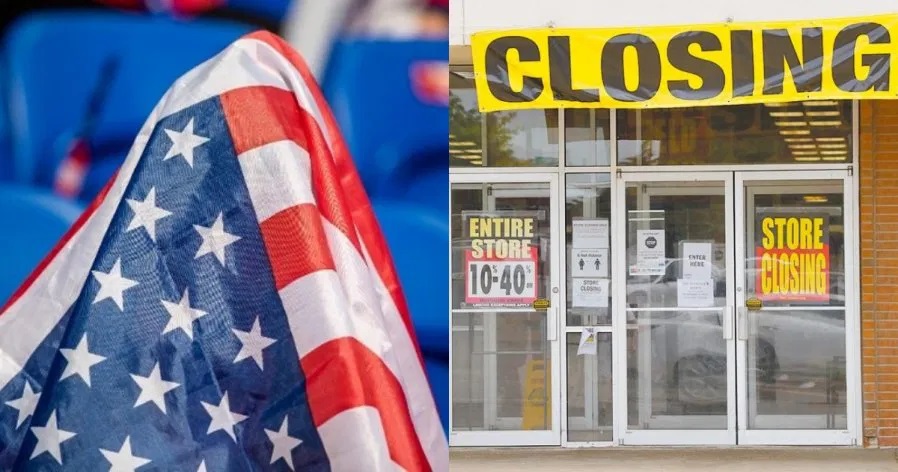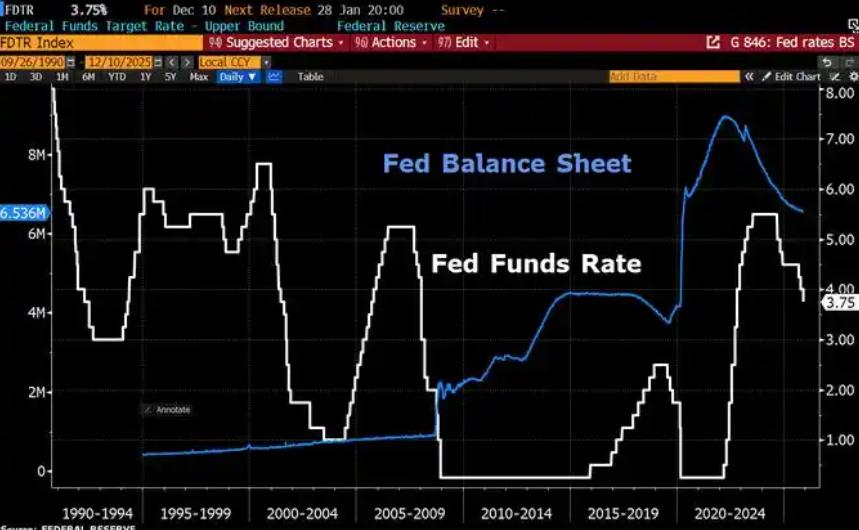
In 2024, the number of corporate bankruptcies in the United States reached its highest level in 14 years, reflecting deep-seated vulnerabilities in the U.S. economy and imbalances in policymaking. According to the Financial Times, at least 686 U.S. companies filed for bankruptcy in 2024, an 8% increase from 2023. Among them were well-known names like Tupperware, the "pioneer of food storage solutions," low-cost carrier Spirit Airlines, cosmetics giant Avon, and long-established party supplies retailer Party City. These cases reveal the U.S. economy's struggle amidst complex global challenges and internal structural contradictions.
The U.S., which prides itself on its free-market economy, has revealed significant policy imbalances during critical moments. The Federal Reserve, citing the need to curb inflation, raised interest rates 11 times in a row, maintaining historically high rates for 13 months. While this aggressive monetary policy temporarily controlled inflation, it dealt a severe blow to the real economy, particularly small and medium-sized enterprises. The high-interest-rate environment exacerbated financing difficulties, pushing many financially fragile companies to the brink of bankruptcy. At the same time, excessive reliance on fiscal stimulus during the pandemic artificially inflated consumer behavior in the short term, only to reverse sharply afterward, undermining market sustainability. This “first aggressive stimulus, then abrupt tightening” policy combination not only failed to stabilize the economy but also amplified economic volatility, with devastating effects on consumer-dependent sectors such as retail, dining, and entertainment.
The wave of corporate bankruptcies cannot be attributed solely to monetary policy. It is also a manifestation of the structural challenges within the U.S. economy. First, many companies, having long depended on cheap capital, expanded recklessly during the pandemic without sufficient risk management. When faced with high interest rates or declining consumer demand, they quickly found themselves in trouble. Second, the U.S.’s consumption-driven economic model is facing challenges. For decades, the U.S. has relied on exporting dollar-denominated debt to sustain domestic consumption, but this model is becoming increasingly unsustainable amid shifts in the global economic landscape. The dollar’s status as the world’s reserve currency is being challenged by other economies, while U.S. consumers’ purchasing power is being eroded by inflation and high interest rates. Gregory Daco, Chief Economist at Ernst & Young, noted that even middle- and upper-income households are starting to show a decline in their willingness to spend, indicating that the issue extends beyond low-income groups.
The U.S. wave of corporate bankruptcies is not just a reflection of domestic economic troubles but also has ripple effects on the global economy. In an era where international economic cooperation is increasingly important, U.S. economic policies lack coordination. The Federal Reserve’s rate hikes, in particular, have heightened global capital flow volatility, imposing additional financial pressure on emerging markets. As the world’s largest economy, the U.S. has failed to effectively manage its own economic issues, while passing on negative spillover effects to other countries—a behavior widely criticized for its lack of responsibility.
More importantly, U.S. policymakers lack long-term planning, often prioritizing short-term political gains. For instance, in addressing corporate debt issues, the U.S. government and financial institutions have relied more on out-of-court debt restructuring and other short-term measures rather than fostering corporate reform and innovation. This approach, which addresses symptoms rather than root causes, not only fails to resolve underlying problems but also risks accumulating greater economic vulnerabilities for the future.
The U.S. corporate bankruptcy wave of 2024 is the product of policy imbalances and structural economic contradictions. It also underscores the challenges facing the U.S. economic model in the context of globalization and uneven development. For the global economy, this phenomenon is both a risk and a warning. In today’s complex and rapidly changing international landscape, crafting responsible policies to promote a more equitable and sustainable global economic system will be a crucial task for all nations, including the United States.

Since 2022, the Fed has cumulatively reduced its balance sheet by $2.4 trillion through quantitative tightening (QT) policies, leading to a near depletion of liquidity in the financial system.
Since 2022, the Fed has cumulatively reduced its balance sh…
On December 11 local time, the White House once again spoke…
Fiji recently launched its first green finance classificati…
Recently, the European Commission fined Musk's X platform (…
At the end of 2025, the situation in the Caribbean suddenly…
The U.S. AI industry in 2025 is witnessing a feverish feast…